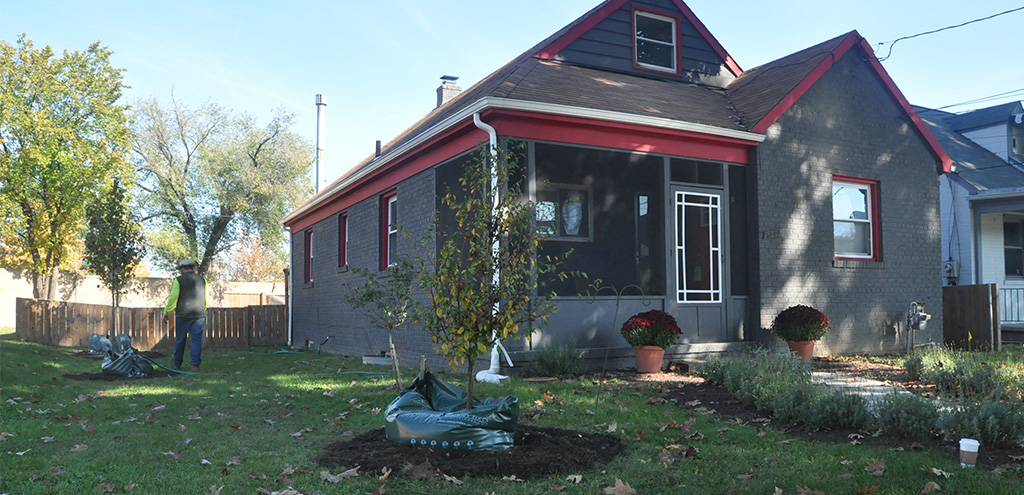THE LEAFLET

What’s the future of tree planting in DC?
Now that 2020, an unprecedented year on practically all fronts, is in the rear view, it has a lot of folks asking what is next? Where do you go after everything you know is forever changed? When faced with these questions, we turned to our work and began to think about the future of urban forestry. It’s a new decade, we’re getting a new administration and, thanks to the ripple effects of the ongoing pandemic, it’s practically a new world. What is the future of urban forestry in DC?
When it comes to DC’s trees we may come to mind first, but the other major urban forestry player in the city is, of course, our partner in crime the District Department of Transportation’s Urban Forestry Division (UFD). Ward Arborists and other professional folks act as the primary steward of the District’s approximately 170,000 public trees. Their main mission of keeping this resource healthy, safe, & growing! These public trees are found along the street (typically in what is called the right of way, the area between the street and the sidewalk), in parks, and at schools.
One of the first lessons you learn in urban forestry is the importance of land ownership – if you own the land, you can plant trees there! So while UFD manages the trees on city-owned land, if anything has been made clear this week, it’s that there are a lot of other players in a nation’s capital. When it comes to open, plantable space in the District the other major player is the National Parks Service (NPS). From triangle park reservations dotted throughout the city to heavy hitters like the National Mall and Tidal Basin to community stalwarts like Anacostia Park and Civil War Defenses of Washington, NPS manages a lot of land and its trees, throughout DC. The steward of over 25 National Parks within the greater Washington region, NPS is a frequent partner of ours.
The final main player when it comes to planting in the District? Us! As you hopefully know, we plant wherever and whenever we can. Partnering with city and national agencies to plant on their land has helped us make tremendous strides in our mission of reaching 40% tree canopy by 2032. But a stark reality facing us is that the plantable space in DC is not growing, if anything it is shrinking.
Despite the progress, a growing threat – noted in prior Tree Report Cards – persists: an increasingly large portion of DC’s land is covered by concrete and asphalt. New buildings, cranes and construction fencing are a visual marker of our growing population, which is expected to close in on 1 million people by the year 2045. While more development will help to accommodate these new residents, it also means that impervious surfaces (like structures and pavement) could replace our city’s green spaces. We launched the Save Our Soil program to stem the loss of green space and revolutionize the way we think about present and future green spaces in the District.
As for the city? As we explored, in 2009 DC had just over 141,000 tree spaces, but the most recent count last year shows 30,000 more trees – or 171,000 spaces. This is due to the city systematically planting every available tree space, while also planting two or more small/medium trees for every large one removed from under wires. That factor has pushed numbers up quite a bit. Ultimately in less than a decade, the city has not only increased the number of spaces but also stocking levels continue to climb. Stocking level for DC’s street trees refers to the number of street trees that can be planted compared to the number that actually are planted. Higher stocking means more shade for people, sidewalks, homes, and businesses; slower traffic; greater stormwater capture; and more leaves to filter carbon and pollution from the air.
But this begs another question: with practically all street tree spaces filled, we still are only at 38% canopy – what do we do next to get to 40%?
That’s where you come in. We’re doing all we can on public and federal land. Planting trees on private lots is the final frontier in achieving the city’s 40% canopy goal – and the goal cannot be achieved without you. If you don’t already know, you can get a free tree planted on your property – whether that’s a lot, near an apartment building’s entrance, group house’s common area, or townhome’s yard, the options are endless! We partner with DC to offer numerous free residential plantings. If you cannot plant where you live – be sure to ask your friend or neighbor who can or check in with your local school, park, or church. You’ll be doing your part in keeping DC green, healthy and a better place to live for all Washingtonians for decades to come! And – equally important – become a member to support our work making DC a sustainable city with an impressive canopy through planting, education, advocacy, maintenance, and community engagement.